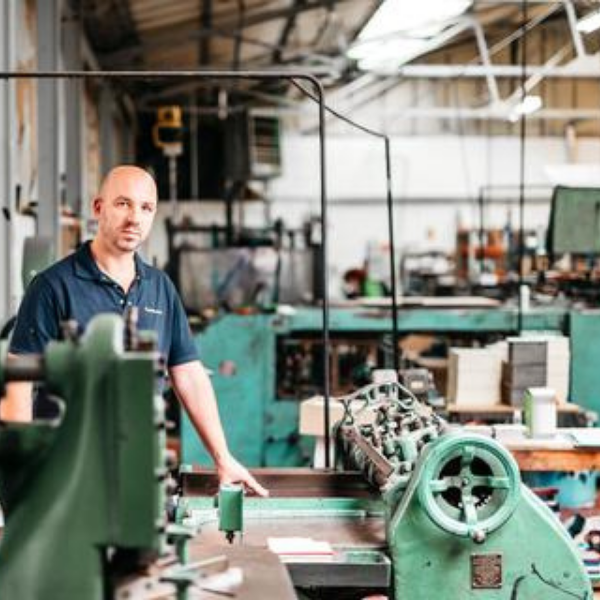The move towards ethical and sustainable fashion is gaining momentum now more than ever before. More shoppers are becoming conscious of where their products are coming from and are looking for brands that are making positive steps towards a more ethical future. If you’re looking for jewellery that lasts a lifetime without having a damaging effect on the environment, you need to start searching for ethical brands. Unsure where to start? Keep reading to find out how to buy ethical jewellery.
What is ethical jewellery?
Ethical jewellery is jewellery that has no impact to the people who make it or the environment it’s made in. By ensuring their materials can be traced back to the source and their manufacturing and sourcing process is ethical, brands are protecting their workers, suppliers, and the climate. These ethical measures include:
- Using Fairtrade or recycled materials
- Ensuring their gemstones and diamonds are conflict-free
- Working with suppliers and workshops that pay fair wages, proper working hours and don’t use child labour
- Not using manufacturing and sourcing practices that pollute or impact the environment
- Avoid mass producing products and creating excess waste
Look at the materials
Whether you’re in store or browsing online, the best way to tell if a piece of jewellery is ethical is by the materials. Every jewellery item is labelled to tell customers what it’s made of, like carat, plating details and occasionally, how it was made. For example, if you have a 14ct gold plated ring, the product description might describe the amount of gold in the ring and what material the gold is plated over. Key words you should be looking for is ‘recyclable’ and ‘Fairtrade.’
What is recycled jewellery?
Recycled gold and silver are precious metals that are reused to make other pieces. The process involves melting the metal and refining it to its purest form. This is typically done if a brand has excess metal and rather than throw it away, they use this process to create new pieces with their leftovers. This has minimal environmental consequences as it eliminates additional mining for materials and eliminates waste. It’s also more cost-effective for brands and allows designers to think outside the box and create unusual pieces.
What is Fairtrade?
Fairtrade is a system of certification that ensures strict and safe standards are met in the production, sourcing and supply of a product or ingredient. Fairtrade ensures workers operate in safe working conditions, receive fair pay, and invest in climate friendly techniques. Fairtrade Certified Gold is an ethical certification that supports small-scale miners, protects the environment, and makes life better for workers and their communities. All Fairtrade gold is sourced from mining sites that meet the Fairtrade Gold Standard. To tell if a piece is Fairtrade or not, it should say it in the product description or will be stamped with a Fairtrade Gold Mark so the piece can be traced back to its source.
Look at the gemstones
Similar to checking materials, take a look at the gemstones that are in your jewellery. Mining for gemstones can be extremely dangerous, so it’s vital that gems are sourced properly without affecting the environment or miners. Some brands will explain where their gemstones are sourced from and in an effort to become more sustainable, they’ll use lab-grown or conflict-free diamonds.
Lab-grown diamonds do exactly what it says on the tin – they’re creating in a lab! More and more jewellery brands are using lab-grown gems, like Pandora. Lab-grown diamonds are considered real diamonds and the quality is still the same as mined diamonds. It’s incredibly hard to tell the difference and more importantly, these diamonds are confirmed to be ethical and sustainable.
If the brand you’re looking for use mined diamonds, you need to make sure they’re conflict-free. Conflict-free diamonds ensure fair pay, safe working conditions and no human rights abuses. These diamonds can be tracked to the mine or place they came from and adhere to the Kimberley Process.
What is the Kimberley Process?
The Kimberley Process (KP) is a certification scheme was established in 2003 to prevent conflict diamonds from entering the mainstream diamond market. If a jewellery brands says they adhere to this process, this means their diamonds and gemstones are ethical and are making a step towards improving mining communities and countries.
Check the brands’ manufacturing process
Finally, check how the brand makes their jewellery. All brands have an ‘About Us’ page on their website which explains how they make their jewellery, what materials they use and what practices they have in place to ensure their processes are ethical. A couple things to look out for are:
The workshops they use
Depending on where they’re based, jewellery brands use their own local workshops to create their pieces or send their designs to be made by their workshop overseas. Wherever the workshops are situated, it’s important to look into what the working conditions are and if the workers are paid well and have normal working hours. Designers will typically tell you where their jewels are made so you know they’re trustworthy and doing everything they can to keep their conditions ethical.
The practices they adhere to
Every jewellery brand is different, for example, where some brands might handcraft everything, others might prefer digital creating, like 3D printing. As we’ve said above, check the materials they use and if they regularly recycle and reuse their metal scraps. Another good thing to look at is if they’re made to order or not. If a brand makes things to order, this means they create a certain amount to sell rather than mass producing pieces. Mass production can lead to excess and unnecessary waste and drastically affect the product quality.
Auree Jewellery take ethical practices and sustainability very seriously. To find out more about the measures they have in place when creating their beautiful collections.
Image credits: aureejewellery.com, kimberleyprocess.com





